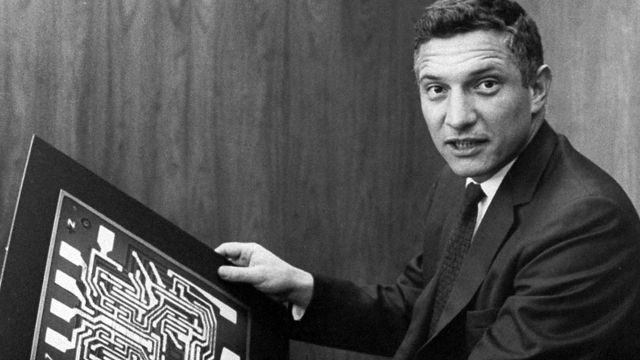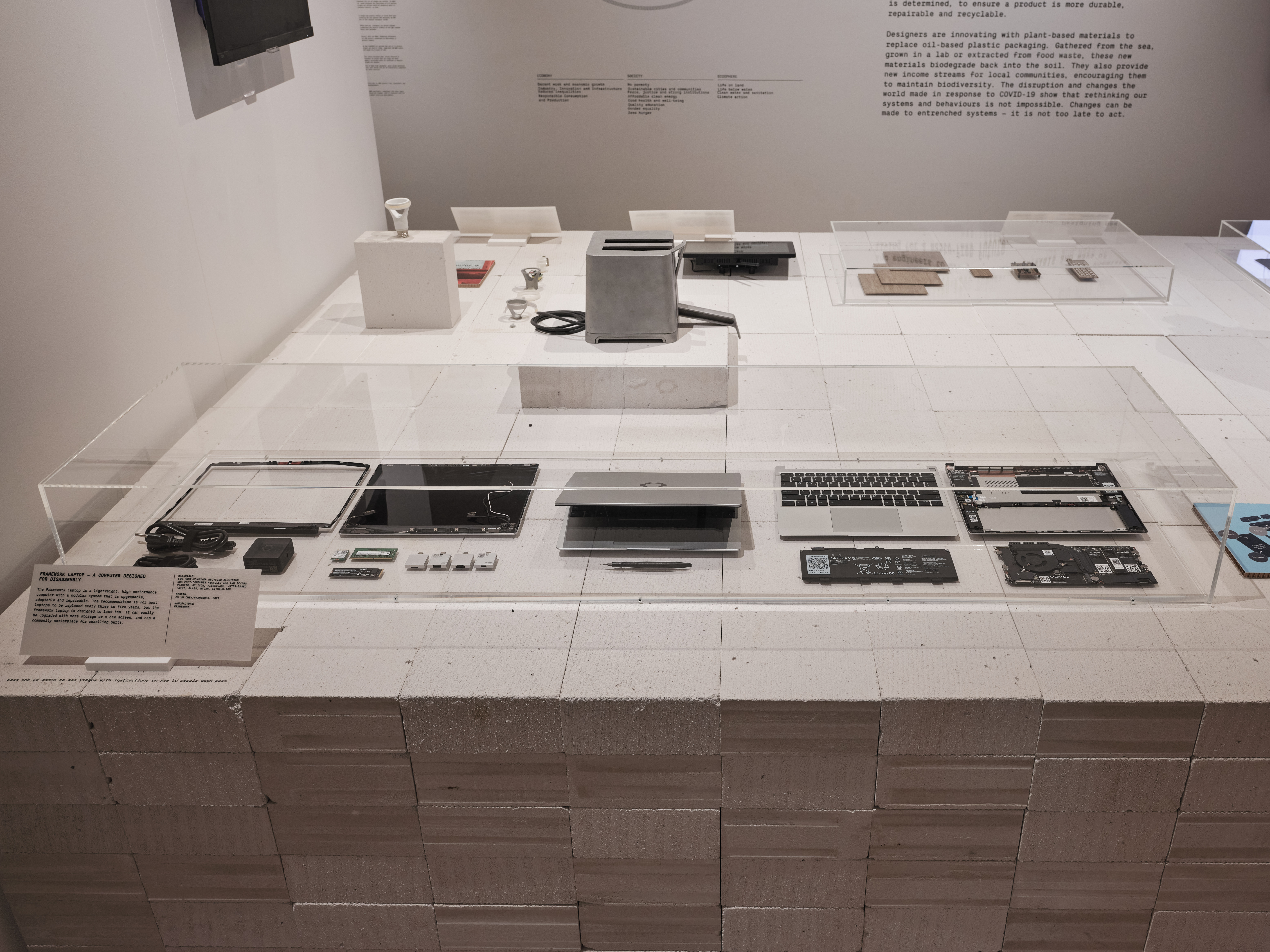|
Computer Module
A computer module is a selection of independent electronic circuits packaged onto a circuit board to provide a basic function within a computer. An example might be an inverter or flip-flop, which would require two or more transistors and a small number of additional supporting devices. Modules would be inserted into a chassis and then wired together to produce a larger logic unit, like an adder. History Modules were the basic building block of most early computer designs, until they started being replaced by integrated circuits in the 1960s, which were essentially an entire module packaged onto a single computer chip. Modules with discrete components continued to be used in specialist roles into the 1970s, notably high-speed modular designs like the CDC 8600, but advances in chip design led to the disappearance of the discrete-component module in the 1970s. See also *Modularity Modularity is the degree to which a system's components may be separated and recombined, of ... [...More Info...] [...Related Items...] OR: [Wikipedia] [Google] [Baidu] |
Circuit Board
A printed circuit board (PCB), also called printed wiring board (PWB), is a laminated sandwich structure of conductive and insulating layers, each with a pattern of traces, planes and other features (similar to wires on a flat surface) etched from one or more sheet layers of copper laminated onto or between sheet layers of a non-conductive substrate. PCBs are used to connect or "wire" components to one another in an electronic circuit. Electrical components may be fixed to conductive pads on the outer layers, generally by soldering, which both electrically connects and mechanically fastens the components to the board. Another manufacturing process adds vias, metal-lined drilled holes that enable electrical interconnections between conductive layers, to boards with more than a single side. Printed circuit boards are used in nearly all electronic products today. Alternatives to PCBs include wire wrap and point-to-point construction, both once popular but now rarely ... [...More Info...] [...Related Items...] OR: [Wikipedia] [Google] [Baidu] |
Computer
A computer is a machine that can be Computer programming, programmed to automatically Execution (computing), carry out sequences of arithmetic or logical operations (''computation''). Modern digital electronic computers can perform generic sets of operations known as Computer program, ''programs'', which enable computers to perform a wide range of tasks. The term computer system may refer to a nominally complete computer that includes the Computer hardware, hardware, operating system, software, and peripheral equipment needed and used for full operation; or to a group of computers that are linked and function together, such as a computer network or computer cluster. A broad range of Programmable logic controller, industrial and Consumer electronics, consumer products use computers as control systems, including simple special-purpose devices like microwave ovens and remote controls, and factory devices like industrial robots. Computers are at the core of general-purpose devices ... [...More Info...] [...Related Items...] OR: [Wikipedia] [Google] [Baidu] |
Inverter (logic Gate)
In digital logic, an inverter or NOT gate is a logic gate which implements logical negation. It outputs a bit opposite of the bit that is put into it. The bits are typically implemented as two differing voltage levels. Description The NOT gate outputs a zero when given a one, and a one when given a zero. Hence, it inverts its inputs. Colloquially, this inversion of bits is called "flipping" bits. As with all binary logic gates, other pairs of symbols such as true and false, or high and low may be used in lieu of one and zero. It is equivalent to the logical negation operator (¬) in mathematical logic. Because it has only one input, it is a unary operation and has the simplest type of truth table. It is also called the complement gate because it produces the ones' complement of a binary number, swapping 0s and 1s. The NOT gate is one of three basic logic gates from which any Boolean circuit may be built up. Together with the AND gate and the OR gate, any function in binary ... [...More Info...] [...Related Items...] OR: [Wikipedia] [Google] [Baidu] |
Flip-flop (electronics)
In electronics, flip-flops and latches are electronic circuit, circuits that have two stable states that can store state information – a bistable multivibrator. The circuit can be made to change state by signals applied to one or more control inputs and will output its state (often along with its logical complement too). It is the basic storage element in sequential logic. Flip-flops and latches are fundamental building blocks of digital electronics systems used in computers, communications, and many other types of systems. Flip-flops and latches are used as data storage elements to store a single ''bit'' (binary digit) of data; one of its two states represents a "one" and the other represents a "zero". Such data storage can be used for storage of ''state (computer science), state'', and such a circuit is described as sequential logic in electronics. When used in a finite-state machine, the output and next state depend not only on its current input, but also on its current stat ... [...More Info...] [...Related Items...] OR: [Wikipedia] [Google] [Baidu] |
Transistor
A transistor is a semiconductor device used to Electronic amplifier, amplify or electronic switch, switch electrical signals and electric power, power. It is one of the basic building blocks of modern electronics. It is composed of semiconductor material, usually with at least three terminal (electronics), terminals for connection to an electronic circuit. A voltage or Electric current, current applied to one pair of the transistor's terminals controls the current through another pair of terminals. Because the controlled (output) power can be higher than the controlling (input) power, a transistor can amplify a signal. Some transistors are packaged individually, but many more in miniature form are found embedded in integrated circuits. Because transistors are the key active components in practically all modern electronics, many people consider them one of the 20th century's greatest inventions. Physicist Julius Edgar Lilienfeld proposed the concept of a field-effect transisto ... [...More Info...] [...Related Items...] OR: [Wikipedia] [Google] [Baidu] |
Integrated Circuit
An integrated circuit (IC), also known as a microchip or simply chip, is a set of electronic circuits, consisting of various electronic components (such as transistors, resistors, and capacitors) and their interconnections. These components are etched onto a small, flat piece ("chip") of semiconductor material, usually silicon. Integrated circuits are used in a wide range of electronic devices, including computers, smartphones, and televisions, to perform various functions such as processing and storing information. They have greatly impacted the field of electronics by enabling device miniaturization and enhanced functionality. Integrated circuits are orders of magnitude smaller, faster, and less expensive than those constructed of discrete components, allowing a large transistor count. The IC's mass production capability, reliability, and building-block approach to integrated circuit design have ensured the rapid adoption of standardized ICs in place of designs using discre ... [...More Info...] [...Related Items...] OR: [Wikipedia] [Google] [Baidu] |
Modular Design
Modular design, or modularity in design, is a design principle that subdivides a system into smaller parts called ''modules'' (such as modular process skids), which can be independently created, modified, replaced, or exchanged with other modules or between different systems. Overview A modular design can be characterized by functional partitioning into discrete scalable and reusable modules, rigorous use of well-defined modular interfaces, and making use of industry standards for interfaces. In this context modularity is at the component level, and has a single dimension, component slottability. A modular system with this limited modularity is generally known as a platform system that uses modular components. Examples are car platforms or the USB port in computer engineering platforms. In design theory this is distinct from a modular system which has higher dimensional modularity and degrees of freedom. A modular system design has no distinct lifetime and exhibits flexibility i ... [...More Info...] [...Related Items...] OR: [Wikipedia] [Google] [Baidu] |
CDC 8600
The CDC 8600 was the last of Seymour Cray's supercomputer designs while he worked for Control Data Corporation. As the natural successor to the CDC 6600 and CDC 7600, the 8600 was intended to be about 10 times as fast as the 7600, already the fastest computer on the market. The design was essentially four 7600's, packed into a very small chassis so they could run at higher clock speeds. Development started in 1968, shortly after the release of the 7600, but the project soon started to bog down. The dense packaging of the system led to serious reliability problems and difficulty cooling the individual components. By 1971, CDC was having cash-flow problems and the design was still not coming together, prompting Cray to leave the company in 1972. The 8600 design effort was eventually canceled in 1974, and Control Data moved on to the CDC STAR-100 series instead. Cray revisited the 8600's basic design in his Cray-2 of the early 1980s. The introduction of integrated circuits solved the ... [...More Info...] [...Related Items...] OR: [Wikipedia] [Google] [Baidu] |
Modularity
Modularity is the degree to which a system's components may be separated and recombined, often with the benefit of flexibility and variety in use. The concept of modularity is used primarily to reduce complexity by breaking a system into varying degrees of interdependence and independence across and "hide the complexity of each part behind an abstraction and interface". However, the concept of modularity can be extended to multiple disciplines, each with their own nuances. Despite these nuances, consistent themes concerning modular systems can be identified. Composability is one of the tenets of functional programming. This makes functional programs modular. Contextual nuances The meaning of the word "modularity" can vary somewhat based on context. The following are contextual examples of modularity across several fields of science, technology, industry, and culture: Science *In biology, modularity recognizes that organisms or metabolic pathways are composed of modules. *I ... [...More Info...] [...Related Items...] OR: [Wikipedia] [Google] [Baidu] |
Electronic Engineering
Electronic engineering is a sub-discipline of electrical engineering that emerged in the early 20th century and is distinguished by the additional use of active components such as semiconductor devices to amplify and control electric current flow. Previously electrical engineering only used passive devices such as mechanical switches, resistors, inductors, and capacitors. It covers fields such as analog electronics, digital electronics, consumer electronics, embedded systems and power electronics. It is also involved in many related fields, for example solid-state physics, radio engineering, telecommunications, control systems, signal processing, systems engineering, computer engineering, instrumentation engineering, electric power control, photonics and robotics. The Institute of Electrical and Electronics Engineers (IEEE) is one of the most important professional bodies for electronics engineers in the US; the equivalent body in the UK is the Institution of Engin ... [...More Info...] [...Related Items...] OR: [Wikipedia] [Google] [Baidu] |




